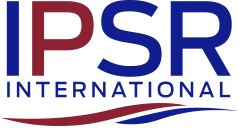Responsibilities of PEG Chairs
The IPSR Roadmaps encompass more than just a projection of the evolution of manufacturing technology. Large end user companies provide an outlook on what their technology product needs are going to be over the timeframe of the roadmap. This future outlook is accomplished by providing information on product emulators to the Technology Working Groups (TWGs). These product emulators are not specific products but are representative of the technology needs of a class of products. IPSR/AIM Photonics have defined four emulator product classes:
1. Data Center
2. Internet of Things (Sensing)
3. Analog RF
4. Arrays
PEG Tasks
The Product Emulator Group (PEG) Chairs are expected to gather data that represents the class of products to which they are assigned. The data should indicate the manufacturing technology and infrastructure needs of this class of products over the timeframe of the Roadmap. This requires specialized knowledge of the product expectations, new product features that will be needed (related to technology rather than product function), market volumes (e.g., to analyze degree of automated tooling), and other manufacturing issues. The emulator chair will be asked to provide tables of information on representative metrics; for example, technology performance requirements, packaging sizes and volumes, normalized costs and anything else that the emulator will need or be dependent on in the areas that IPSR roadmaps.
In addition, each PEG Chair is responsible for securing a speaker four times per year for the IPSR Roadmapping Webinar Series. These webinars feature a 30-minute presentation followed by discussion and are intended to develop trust, cooperation, and shared objectives
The Product Emulators are key to the whole IPSR roadmapping exercise. The emulators help the TWG chairs to reflect real life needs against the evolution of technology. When this is done, we usually find mis-matches or gaps between product needs and the normal evolution of technology. These gaps are where AIM Photonics projects should focus. By focusing resources on the industry gaps, the global supply chain is able to more rapidly close these gaps and move manufacturing competitiveness forward.
Interact with TWGs
Ideally, representatives from several companies will pool their generic knowledge on the emulators they develop. In that way, an overall industry view is provided to the TWG chairs. If concern over sharing confidential information arises, the IPSR staff can arrange for the data to be collected and pooled in a “blind study” where individual company information is not disclosed. We also ask knowledgeable TWG participants to help populate the data tables in partnership with the PEGs. We have found that the TWGs frequently have better access to detailed knowledge in some areas than the PEGs. The PEGs are still relied upon as the primary group to provide the trend and business information for the emulators.
The typical Product Emulator Group Chair has a broad background that encompasses technology as well as product development. Ideal candidates are individuals who perform integration functions between product development groups and manufacturing technology or operations functions (both internal and external to the company).
Meeting & Time Requirements
Much of the work is done within the individual’s normal work environment and “virtual” meetings. Three to four face-to-face meetings are required over the nine-month roadmap development cycle for PEG Chairs.
In addition to this time, effort will be required to conduct conference calls and edit the document/spreadsheet. While each group sets their own work patterns, the following is a reasonable estimate of time required:
Spring and Fall IPSR Roadmap Workshops held in Cambridge Massachusetts. Each workshop is 1 1/2 days long.
Each PEG chair is asked to attend bi-weekly PEG Leadership calls, which last for 1 to 1 1/2 hours. In addition to this time, effort will be required to conduct PEG conference calls and edit the document during the period from February/March through completion of chapter (end of September). While each group sets their own work patterns, the following is a reasonable estimate of time required:
- PEG conference calls:
2 times per month for 1-2 hours.
At end of cycle (last few weeks), can be more frequent as chapter is assembled.
Effective PEG leaders will usually break up writing assignments and development of attributes to members of their committee. Chair and Co-Chair of committee can then focus on editing chapter and writing summary/conclusions.
- Editing time estimate:
16-24 hours over one month period.
After the PEG chapter is submitted, PEG Chairs/Co-Chairs may be consulted from time to time as overall roadmap is integrated and overall executive summary is created. This is usually limited to a few phone calls and, potentially, small clarifications/additions to chapter.
